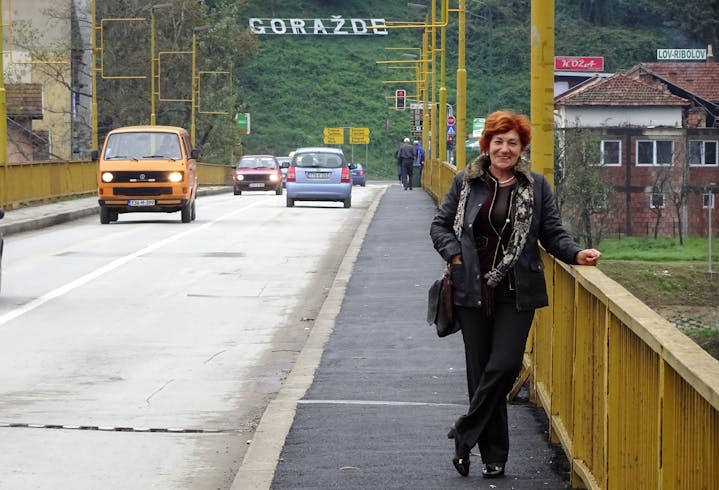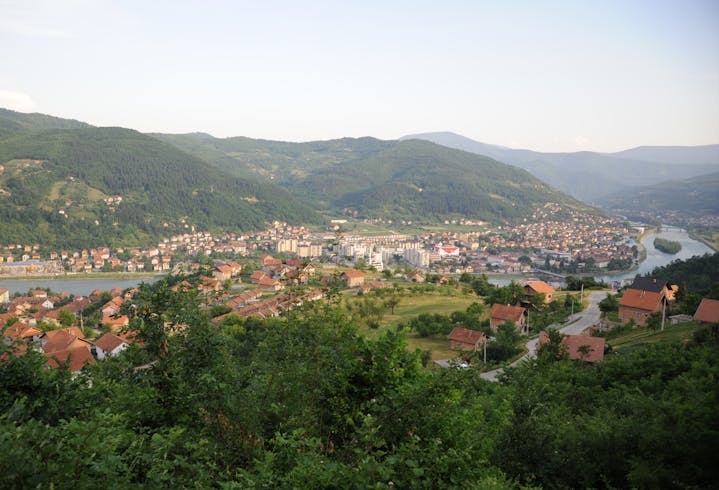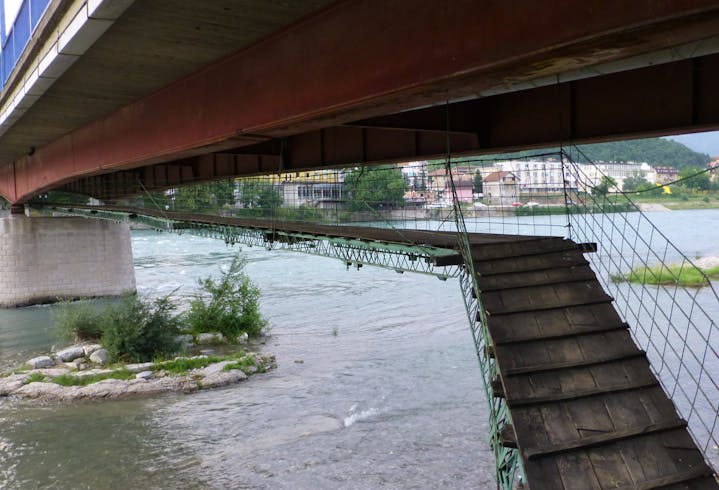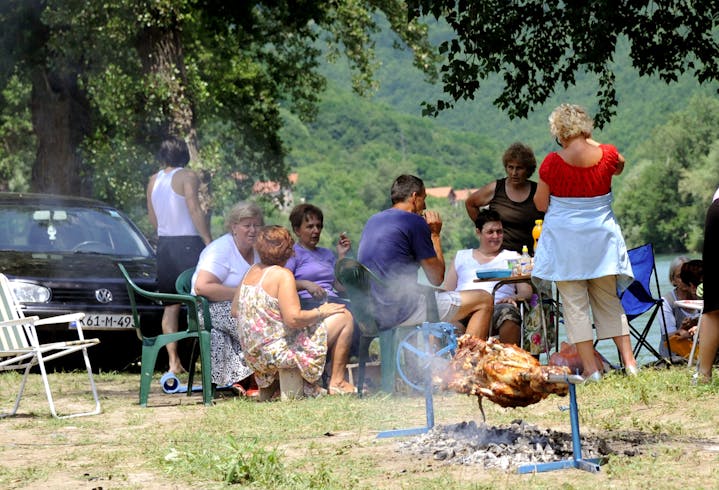Goražde – where the Bosna Quilts are sewn
Wherever a Bosna Quilt finds a place, whether on a wall in Northern Germany or on a bed in South Tyrol – it has already been to Goražde, the city where our quilts are sewn. This is where the women who make the ornate seams live.

Let Safira Hošo, the manager of the Bosna Quilt Workshop in Goražde, guide you through her town.

When you talk about a place in Bosnia, you often have to split it up into «before the war» and «after the war». This also applies to Goražde.
Goražde before the war:
A smaller industrial city with almost 40,000 inhabitants (approx. 27,000 Bosniaks / Muslims, approx. 11,000 Serbs / Orthodox, approx. 1,200 Croats / Catholics). The majority of the population works in factories in the chemical, armaments, metal and textile industries. But there are also many small farms. The city has a small hospital, a shopping center, a cinema and a theater. It is heated via a district heating network.
Goražde after the war:
Today around 21,000 inhabitants (approx. 20,000 Bosniaks / Muslims and approx. 700 Serbs / Orthodox). The largest employers are still the weapons factory and a textile factory. In the meantime, however, some foreign companies have also settled here, for example a German fittings manufacturer. The hospital still exists, the cinema and the theater no longer exist. The district heating network was destroyed during the war and never rebuilt. The war has halved the city’s population. Many died in the war, and even more fled. Many skilled workers have long since emigrated, as are a large number of young people.

The city is located on the Drina, the landscape is very beautiful. Under other conditions, Goražde and the surrounding area could be a popular holiday destination, a tourist attraction: the small town and the nice villages in its neighborhood, the Drina with its incredibly blue-green water could be ideal for swimming or canoeing. Unfortunately, the river is too cold and dangerous to swim. The Mratinje hydropower plant in Montenegro routinely opens the locks of its dam without warning. This is why the level of the Drina can quickly rise by up to two meters.

Firewood lying in the courtyard of a residential complex. Because the district heating system no longer exists, the residents have made holes in the outer wall of their apartments and heat them individually with small wood stoves. In winter, especially when there is fog and low air pressure, you can feel the acrid smoke from the hundreds of small stoves.

For a few years, a large mosque has dominated the market square. There has never been one before. The mosque is a donation from Turkey. Skillful negotiators took advantage of a vacuum during a change of mayor and received approval from the city government. An example of how Muslim-majority countries expand their influence in poorer countries under the guise of charity. It is not only Turkey that is active here, but - especially in Sarajevo - Gulf states such as Qatar and Saudi Arabia. Incidentally, the same thing is happening on the Christian side in Serbia, where Russia is the driving force behind such interventions.

Since the mosque now dominates the market square, the market can no longer take place there. The market hall is now on the outskirts and it is difficult to reach for people without a car.

A small emergency bridge hangs under the one major bridge over the Drina. This wartime relic is an impressive reminder of the siege. Constructed by skillful residents at risk of death, it offered the only way to get to the other side of the Drina under the protection of the main bridge. That, too, was dangerous enough. Like Sarajevo, Goražde was besieged for years. With the difference that Sarajevo received international aid, while Goražde largely survived the 1336-day siege on its own. That is why Goražde is sometimes called «Grad Heroja», the city of heroes, in Bosnia. It is difficult to imagine what life – if you can still call it that – must have been in the besieged city.

Even 25 years after the war’s end, its wounds remain visible in Goražde. There are still houses whose walls are littered with bullet holes from the time of the siege. Invisible to the eye, but still present in large numbers: land mines. If you don’t know the area, you should refrain from going off the beaten track. In the picture, a sign indicates the danger. The region will have to bear this burden for a long time to come.

But the Bosnians do not let their lives be spoiled. We are touched and filled by their hospitality every time we visit. And if you are lucky enough to be invited to one of their parties, then it is so warm and so tasty that you forget everything that is and what was.